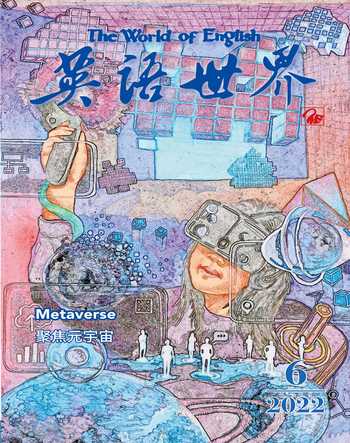Korean TV’s Unlikely Star: Subway Sandwiches难以置信的韩剧之星:赛百味三明治
塞思·伯克曼 陈天怡
In an episode of the Korean television show The K2, which takes place in a world of fugitives and bodyguards, a man is being treated with a defibrillator1 when he enters into a dream state.
On the fringe of death, he recalls taking a past love to a Subway restaurant and to a park for a picnic, where he gently feeds her a sandwich and soft drink with the Subway logo facing the camera.
The detail is not a narrative quirk2. It is a result of South Korea’s broadcasting regulations and the aggressive use of product placement3 in the country’s shows by Subway, the US sandwich chain famous for its US$5 foot-longs.
“People joke, ‘If I had a drink every time Subway popped up, I’d be drunk before the first half is over,’” said Ms Jae-Ha Kim, a journalist in Chicago who reviews Korean dramas. “Everyone here’s like, ‘I never got a Subway sandwich that looked that good, with that much meat.’”
Product placement in TV shows is a reality the world over. But South Korea’s terrestrial4 stations are prevented from inserting commercial breaks during programming, meaning many Korean companies must be creative about getting their wares in front of viewers. As Korean dramas have become more popular with international audiences, global brands have pushed to be part of the action.
And no company has pushed harder than Subway, which has grown into the world’s largest fast-food chain by store count since its founding in 1965 in Bridgeport, Connecticut.
Subway did not provide a total of how many Korean dramas its products had appeared in, but an informal tally by The New York Times counted appearances on 17 shows. That can add up to a lot of people seeing the company’s cold cuts5. Netflix, with more than 203 million worldwide members, has become a leading portal for Korean dramas. When the highly anticipated Korean drama Sweet Home was released on Netflix, 22 million viewers watched the show in its first month.
By sleekly6 presenting its products on Korean dramas as a harbinger7 of cool, Subway is also presenting a fresh image to American viewers who are increasingly watching the shows.
Pristinely8 clean Subway shops pop with bright colors and serve as the setting for business meetings, social gossip and dates for beautiful couples. Instead of cookies and tea, elderly Korean TV characters keep freshly wrapped Subway sandwiches at the ready; you never can know when an unexpected guest will drop by and crave an Italian sub.
Product placement in Korean shows began in earnest in 2010, when South Korea’s stringent broadcasting laws eased restrictions on the practice in an effort to increase network revenues and promote Korean goods. In 2018, South Korea’s networks sold US$114 million worth of product placement, up 15 per cent from the previous year, according to Soobum Lee, a mass communication professor at Incheon National University.
Shows collect an average of about US$900,000 from product placements, although 2016’s Descendants of the Sun sold triple that amount, Lee said. It was also criticised by some viewers for excessive product placement.
Other US companies, like Papa John’s Pizza, have used product placements in Korean dramas, but none are as ubiquitous as Subway.
Keeping up with trends, Subway has begun teasing new sandwiches on shows. The company released its own minidrama on YouTube, Someway, about a young woman who develops a crush on a Subway employee and regularly eats at his location to win his affection.
Each episode begins with a character expressing fondness for a new sandwich variety, like one made with Altermeat, a meat substitute. The first episode of Someway has more than 1.3 million views.
Subway opened its first South Korea location in 1992. Now there are more than 430 Subways in the country, its second-largest footprint in Asia, behind China.
To continually appeal to its target demographic of 15- to 25-year-olds, Subway is also becoming more inventive with how it is presented. On the drama Memories of the Alhambra, gamers competing in an augmented reality game collected valuable swords and coins by going to Subway.
In real life, newer restaurants with digital menu boards display the chain’s appearances on shows.
Product placement “was a relatively cheap way to get us brand awareness,” said Colin Clark, the country director for Subway in South Korea. “It was something the other brands were doing but weren’t really kind of owning that space the way Subway started doing.”
Brands like Subway will soon be able to do more traditional advertising on South Korean television. In January, the Korea Communications Commission announced plans to allow commercial breaks on terrestrial stations.
Product placement is not likely to disappear, though.
Mr Clark said that terrestrial advertising was too expensive and that those stations did not reach Subway’s desired young customer base, which frequently streams episodes on phones.
Besides, the practice of product placement has already become a plot point9.
On the show Because This Is My First Life, the lead character dreams of becoming a television writer. When she lands a job in the industry, her assignment is to jam product placements into the scripts of popular Korean dramas.
在讲述逃亡者和保镖故事的韩剧《守护者K2》中,一名男子在接受除颤器治疗时进入了梦境。
濒死之际,他回想起带曾经的爱人去赛百味餐厅,然后去公园野餐,温柔地喂她三明治和软饮料——赛百味的商标正对着镜头。
这一细节并非叙事的偶然,而是韩国的广播电视监管规定及赛百味声势浩大的韩剧广告植入带来的。赛百味是美国三明治连锁品牌,以一英尺长、售价五美元的三明治闻名。
“有玩笑说:‘如果赛百味每次出现我都喝一杯,还没播完一半我就得醉了。’”芝加哥的韩剧评论记者金在河(音译)女士说,“所有人都说:‘我从没买到过看起来那么好吃、有那么多肉的赛百味三明治。’”
电视节目中植入广告在全球范围内普遍存在。但是,韩国禁止地面频道在节目中插播商业广告,所以许多韩国公司不得不另辟蹊径将商品呈现在观众面前。随着韩剧愈发受到国际观众的喜爱,全球品牌也尽力参与其中。
没有公司在这方面比得上赛百味。自1965年在美国康涅狄格州布里奇波特市成立以来,赛百味已成为全球门店最多的快餐连锁品牌。
赛百味并未透露其产品总共在多少部韩剧中出现过,但《纽约时报》的一项非正式统计显示有17部。这意味着很多人都看到了赛百味的冷肉切片。在全球拥有超过2.03亿会员的网飞已经成为韩剧的主要门户网站。备受期待的韩剧《甜蜜家园》在网飞上线后,首月即有2200万人观看。
赛百味在韩剧中巧妙地将其产品打造成时髦的象征,也向越来越多观看韩剧的美国观众展示了全新的形象。
洁净如新、色彩鲜明的赛百味门店成了商务会议、社交八卦和养眼情侣约会的场所。韩剧中的老年角色不再准备饼干和茶,而是时刻备着刚刚包好的赛百味三明治——谁知道何时会有不速之客来访,想吃个意式三明治呢。
韩剧中的广告植入真正始于2010年。当时,为增加广播电视网络收入并推广韩国商品,韩国严格的广播电视法放松了对于广告植入的限制。据仁川大学大众传播学教授李秀范统计,韩国广播电视网络2018年通过销售植入式广告获得1.14亿美元,同比增长15%。
李秀范说,电视剧的广告植入收入平均为90万美元左右,2016年的《太阳的后裔》更是卖出了3倍于均值的广告。但也有观众批评该剧广告植入过多。
棒约翰披萨等其他美国公司也曾在韩剧中植入广告,但都不似赛百味这般无孔不入。
紧跟潮流的赛百味开始在节目中卖弄新款三明治。公司在优兔上发布了自制迷你剧《不知何故》,讲述一年轻女子暗恋一位赛百味员工,于是定期光顾他工作的门店,只为赢得他的好感。
每集开头都有一个角色表达对某新款三明治的喜爱,比如使用Altermeat素肉制作的三明治。《不知何故》第一集观看量超过了130万。
赛百味于1992年开设了首家韩国分店。如今,韩国有超过430家赛百味,位居亚洲第二,仅次于中国。
为了持续吸引15至25岁的目标人群,赛百味在广告形式上也越来越有创意。在韩剧《阿尔罕布拉宫的回忆》中,参加增强现实游戏的玩家会去赛百味收集珍贵的宝剑和钱币。
现实中,采用电子菜单的新店会配上赛百味的影视剧照。
赛百味韩国业务总监科林·克拉克说,植入式广告“以一种相对廉价的方式提高了赛百味的品牌知名度。其他品牌也做过类似的事,但都没有像赛百味刚开始那样气势如虹”。
包括赛百味在内的各大品牌很快就能增加在韩国电视上的传统广告了。2021年1月,韩国通信委员会宣布将允许地面频道插播广告。
不过,植入式广告不太可能消失。
克拉克称,地面频道广告太贵,而且无法触达赛百味的期望客群——常用手机看剧的年轻人。
此外,广告植入已经成为重要情节。
韩剧《今生是第一次》的主角梦想成为一名电视编剧。她终于在该行业找到一份工作,任务就是将广告強行植入热门韩剧的剧本之中。
1 defibrillator除颤器,通过电击控制心肌运动的医疗仪器。 2 quirk(尤指偶发的)怪事。 3 product placement植入式广告,为广告目的在电影或电视节目中使用某产品。
4 terrestrial陆地上的,地面上的(相对于卫星而言)。 5 cold cuts切成片的冷肉。 6 sleekly圆滑地。
7 harbinger(常指不好的)预兆,兆头。 8 pristinely崭新地,原始地。
9 plot point重要情节,剧情转折点。
- 英语世界的其它文章
- The 7 Biggest Threats to Metaverse元宇宙面临的七大威胁
- What Is the Metaverse?什么是元宇宙?
- 6 Ways the Metaverse Will Change the World in the Near Future元宇宙将在六个方面改变世界
- Metaverse: Its Potential Negatives元宇宙的潜在弊端
- As China Warms Up to the Metaverse, Who’s Building It?中国元宇宙升温,谁是弄潮儿?
- Top 9 Popular Metaverse Books元宇宙九大热门书

